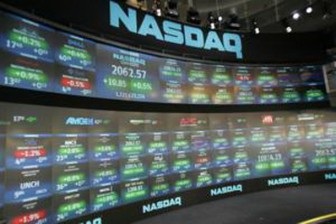 By Caroline Valetkevitch
By Caroline Valetkevitch
NEW YORK (Reuters) – U.S. stocks fell on Thursday and could be in line for more weakness as worries about Washington’s ability to find a timely solution to the “fiscal cliff” dominate investor thinking in coming weeks.
The S&P 500 dropped for a second day and closed below its 200-day moving average for the first time in five months. The moving average is a measure of the market’s long-term trend, and a significant break through that level would be seen as a sign of weakness. Just minutes before the closing bell, stocks accelerated their declines and the S&P 500 fell more than 1 percent.
McDonald’s Corp shares fell 2 percent to $85.13 after the world’s largest hamburger chain reported its first monthly drop in global sales since March 2003. The stock’s weakness hurt the Dow, which fell through its 200-day moving average on Wednesday.
“Most of the major indices are busting below or challenging those trendlines. Typically those offer pretty strong support, and I would be surprised to see the S&P 500 fall like a knife through here,” said Bruce Zaro, chief technical strategist at Delta Global Asset Management, in Boston.
Apple (AAPL.O) shares sank for a second day. The stock fell 3.6 percent to $537.75 and is down more than 20 percent from its September 21 all-time intraday high of $705.07.
The Dow Jones industrial average lost 121.41 points, or 0.94 percent, to 12,811.32 at the close. The Standard & Poor’s 500 Index fell 17.02 points, or 1.22 percent, to 1,377.51, ending at its lowest level since August 2. The Nasdaq Composite Index dropped 41.70 points, or 1.42 percent, to close at 2,895.58.
Since reaching a 52-week closing high of 1,465.77 on September 14, the S&P 500 has dropped 6 percent. On Wednesday, a day after Democratic President Barack Obama defeated Republican Mitt Romney in the U.S. election, the benchmark S&P 500 dropped more than 2 percent for its biggest one-day percentage decline since June 1.
Investors worry that if no deal is reached in Congress over some $600 billion in spending cuts and tax increases due to take effect early next year, the struggling U.S. economy could fall into recession.
While a comprehensive agreement to avoid the automatic spending cuts and tax increases of the “fiscal cliff” was possible, a more likely scenario is for political leaders to find a temporary fix to buy time until the new Congress and Obama are sworn in, which will occur in January.
The prospect of haggling over the budget has deepened the uncertainty for investors, who have sold stocks on the expectation taxes will go up on capital gains and dividends.
“That’s really what investors have been reacting to these last two days,” said Zaro. “It is this worry about the fiscal cliff and the ability of politicians to come to a solution.”
Because of those worries, the market is likely to keep challenging support levels in the coming weeks, he said.
On the data front, the U.S. government reported a better-than-expected drop in weekly first-time claims for unemployment benefits as well as a rise in U.S. exports.
While that news supported stock futures early in the U.S. trading day, it was soon overshadowed by the U.S. fiscal worries.
Qualcomm Inc was a bright spot, with the stock ending up 4.4 percent at $60.67 after the leading supplier of chips for cell phones reported quarterly revenue Wednesday that beat expectations.
Among other earnings reports, Whole Foods Market Inc posted earnings that met expectations, but said Hurricane Sandy was a drag on sales this quarter. Its shares slid 5.9 percent to $90.31.
With results in from more than 440 companies, third-quarter S&P 500 earnings are now seen down 0.2 percent from a year ago, which is slightly better than the forecast at the start of the reporting period. Results have been especially weak on the revenue side, however, with just 38 percent of companies beating on sales, Thomson Reuters data showed.
(Reporting by Caroline Valetkevitch and Chuck Mikolajczak; Editing by Kenneth Barry and Jan Paschal)
Source: Reuters


























